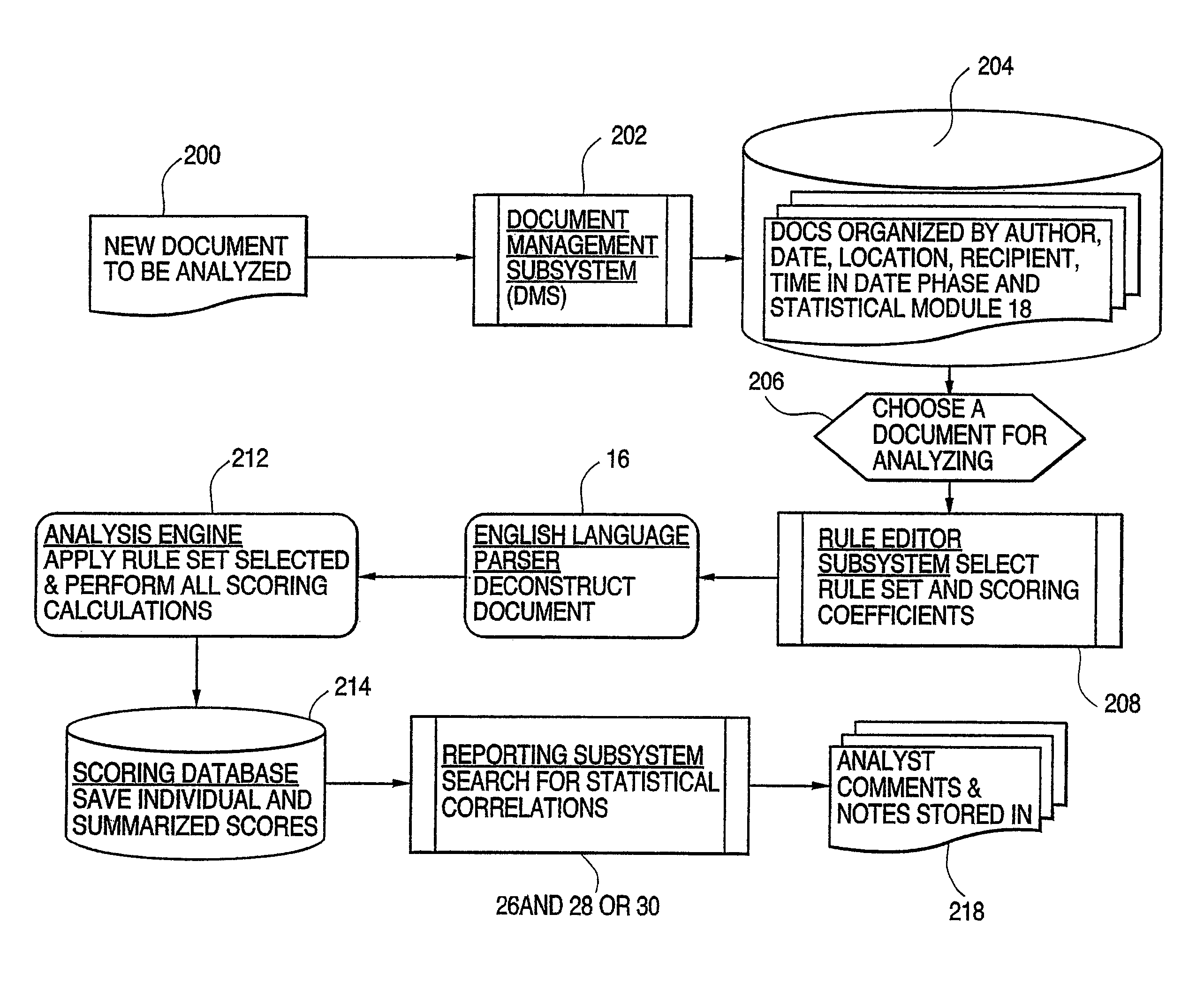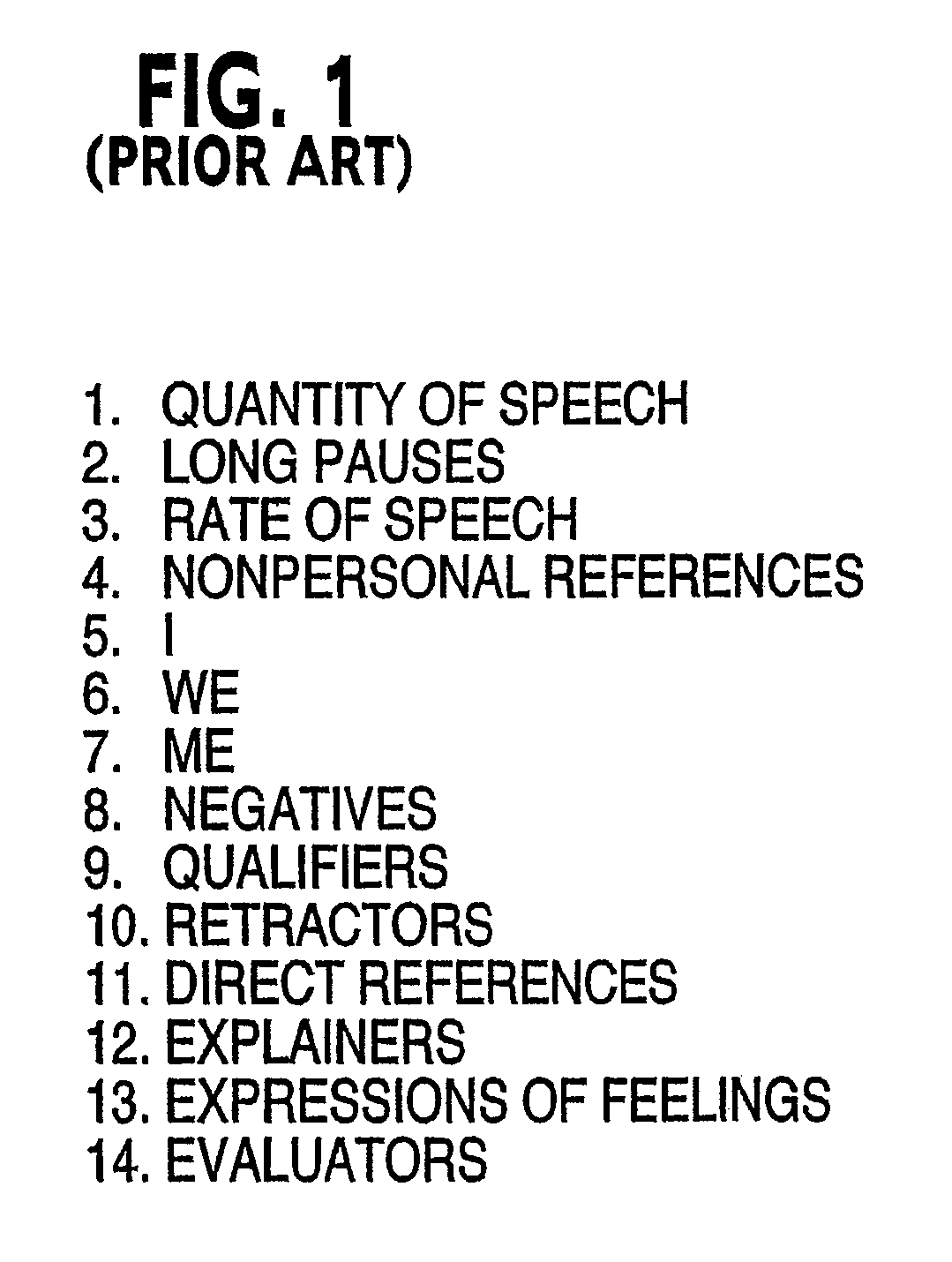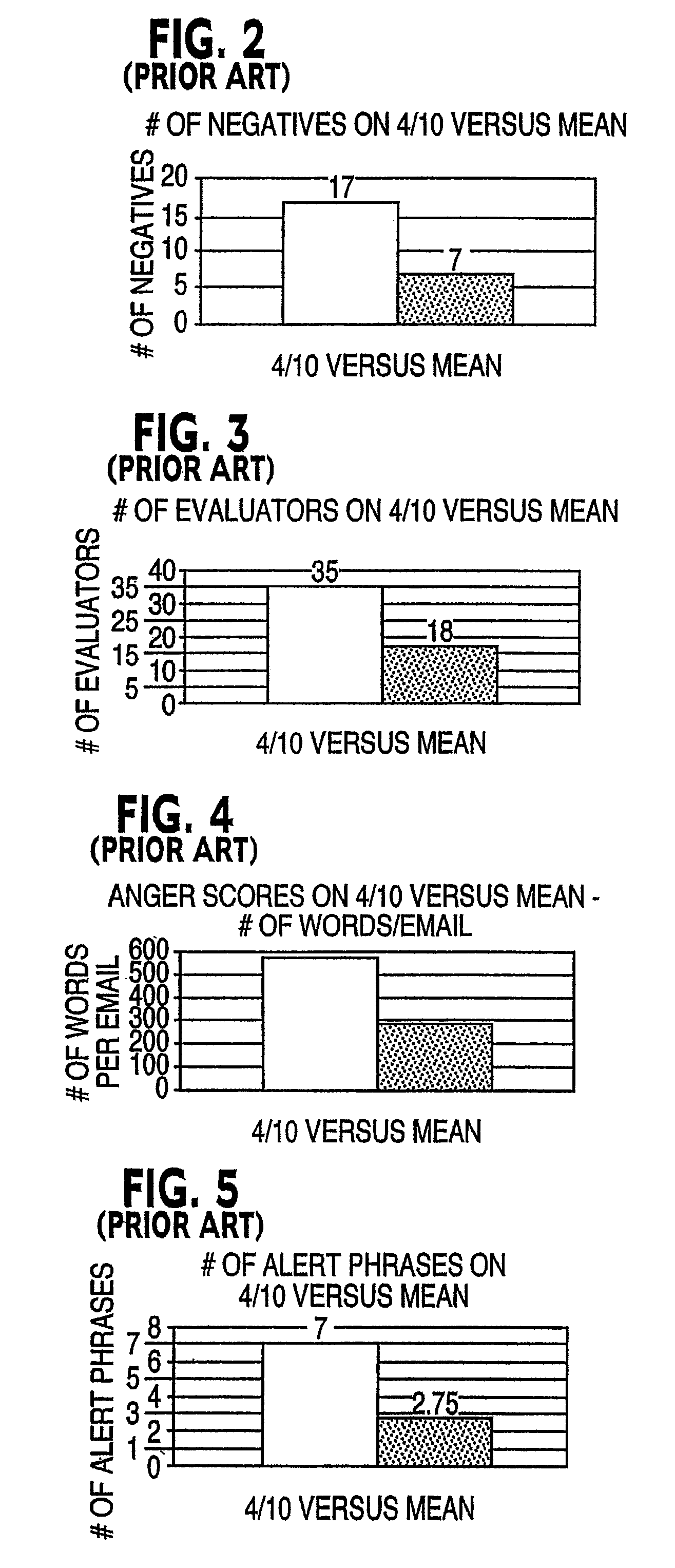System and method for computerized psychological content analysis of computer and media generated communications to produce communications management support, indications and warnings of dangerous behavior, assessment of media images, and personnel selection support
a computer and media-generated communication and content analysis technology, applied in the field of systems and methods for analyzing computer-mediated communications, can solve the problems of not being able to utilize the algorithm of weintraubs for computer-mediated communications, media communications, self-monitoring or personnel selection, and not being able to utilize the algorithm of gottschalk and his colleagues regarding communication by normal employees in the workplace, and achieve the effect of improving the communication
- Summary
- Abstract
- Description
- Claims
- Application Information
AI Technical Summary
Benefits of technology
Problems solved by technology
Method used
Image
Examples
case example
A Case Example
[0245]This case below illustrates operation of the invention, including how the output communication appears and is applied. At the outset, emails or other computerized communications are scanned for the selected words and values utilized in the three categories 20, 22 and 24 of algorithms—psychological profiling, key words and message characteristics—as described above. These values are preferably assembled on a single spreadsheet for each email produced by a subject. As additional emails are collected, an additional spreadsheet is constructed containing mean scores and other values for all collected emails for a subject. The analytical algorithms are then applied to the data in the spreadsheets to construct critical scores.
[0246]For some of the more advanced psychological profiling variables, it is often desirable to apply a correction factor that accounts for the difference in the number of words per computer mediated communication. For example, if there is interest...
PUM
 Login to View More
Login to View More Abstract
Description
Claims
Application Information
 Login to View More
Login to View More - R&D
- Intellectual Property
- Life Sciences
- Materials
- Tech Scout
- Unparalleled Data Quality
- Higher Quality Content
- 60% Fewer Hallucinations
Browse by: Latest US Patents, China's latest patents, Technical Efficacy Thesaurus, Application Domain, Technology Topic, Popular Technical Reports.
© 2025 PatSnap. All rights reserved.Legal|Privacy policy|Modern Slavery Act Transparency Statement|Sitemap|About US| Contact US: help@patsnap.com



